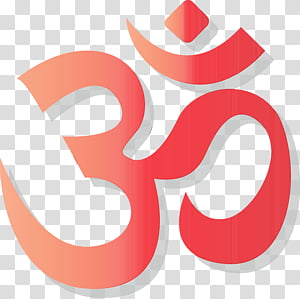Modern Interpretations of Hindu Texts
Hinduism, one of the world’s oldest living religions, boasts a vast repository of sacred texts, including the Vedas, Upanishads, Bhagavad Gita, and the epics of Ramayana and Mahabharata. For centuries, these texts have provided guidance on life, spirituality, morality, and the nature of existence. However, as we navigate the complexities of the 21st century, how do these ancient scriptures remain relevant? Modern interpretations of Hindu texts offer profound insights, connecting timeless wisdom with contemporary challenges.
The Timelessness of Hindu Texts
At the heart of Hindu philosophy is the concept of Sanatana Dharma, or the eternal law. This concept implies that the principles found in Hindu scriptures transcend time and space, offering universal truths applicable to any era. For instance, the Bhagavad Gita’s teachings on duty, righteousness, and detachment from material outcomes resonate as strongly today as they did millennia ago. However, these teachings require contextualization for modern readers to fully grasp their relevance.
Reinterpreting Dharma in the Modern Context
The concept of dharma—the moral order of the universe and the individual's role in maintaining it—remains central to Hindu thought. In ancient times, dharma was often tied to caste and gender roles. Today, however, modern scholars and practitioners interpret dharma in terms of universal values such as justice, equality, and environmental sustainability.
For example, while traditional interpretations emphasized rigid social duties, contemporary readings advocate for a more fluid understanding, where personal growth, social justice, and ethical responsibilities take precedence over fixed societal roles. This shift allows modern Hindus to reconcile their spiritual heritage with evolving ideas of human rights and social equality.
Gender and Hindu Texts: A Modern Feminist Perspective
One of the most significant areas of reinterpretation is the role of women in Hindu texts. Feminist scholars have reexamined the portrayal of women in epics like the Ramayana and Mahabharata, challenging patriarchal readings of Sita’s chastity or Draupadi’s victimhood. Modern interpretations view these characters through the lens of strength, agency, and resilience, offering empowering narratives for women today.
For instance, Sita’s decision to return to Mother Earth in the Ramayana is now seen by many as an act of autonomy rather than submission. Similarly, Draupadi’s questioning of the injustices she faces in the Mahabharata is celebrated as a symbol of resistance against oppression.
Environmentalism and Hindu Texts
Another significant modern interpretation of Hindu texts focuses on environmentalism. Hindu scriptures emphasize the interconnectedness of all life, with concepts like ahimsa (non-violence) and prakriti (nature) central to Hindu cosmology. In today’s world, as environmental degradation threatens the planet, modern interpreters have drawn upon these ancient concepts to advocate for sustainable living and environmental stewardship.
The Rig Veda’s hymns celebrating the Earth as the nurturing mother and the Upanishads’ focus on the interconnectedness of all beings serve as powerful reminders of humanity’s responsibility to protect the environment. Hindu ecological movements have emerged, inspired by these texts, advocating for a lifestyle in harmony with nature.
The Spiritual but Not Religious Movement
In the 21st century, many people identify as "spiritual but not religious." Modern interpretations of Hindu texts often align with this trend, focusing on the universal and experiential aspects of spirituality over ritualistic or institutional practices. The non-dualistic philosophy of Advaita Vedanta, found in the Upanishads, resonates with modern seekers who view spirituality as a personal journey toward self-realization rather than adherence to dogma.
The Bhagavad Gita’s teachings on meditation, mindfulness, and selfless action, for instance, have been widely adopted by people of various faiths—or no faith at all—as tools for personal growth and inner peace.
Technology and Hindu Thought: A New Frontier
As we progress further into the digital age, technology offers another avenue for reinterpreting Hindu texts. Platforms like YouTube, podcasts, and online courses make the wisdom of ancient scriptures accessible to a global audience, while apps dedicated to meditation and mindfulness often draw inspiration from Hindu teachings.
Moreover, discussions about artificial intelligence and the ethics of emerging technologies are beginning to reference Hindu philosophical concepts like karma (the law of cause and effect) and maya (the illusory nature of the material world), offering new frameworks for understanding the impact of technology on human life.
Conclusion: A Living Tradition
The reinterpretation of Hindu texts in the modern world demonstrates the living, dynamic nature of the religion. Far from being relics of the past, these texts continue to inspire and guide individuals today, providing wisdom that is as relevant in the boardroom as it is in the temple. By reinterpreting these texts to align with contemporary values and challenges, Hinduism remains a vibrant and evolving tradition, offering guidance for personal fulfillment, social justice, and global sustainability.
As the world grows increasingly interconnected and complex, the universal messages of love, compassion, and self-realization found in Hindu texts will continue to offer pathways for both spiritual and practical navigation in modern life.





Joey
Jennie